The Relocators: Mark’s fermentation journey begins
Kary Boan-Dunham | July 14, 2013Original blog post written by Mark over at Kary & Mark Move Upstate
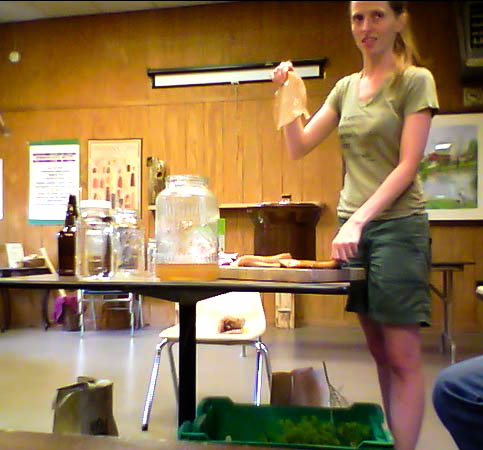
I like to listen to podcasts when I’m walking the dogs and lately there have been many on the subject of food and, in particular, the benefits of fermented foods. I recently finished Michael Pollan’s excellent book Cooked which, in addition to covering barbeque (fire), braising (water), and sourdough bread making (air), also has a great section on foods created via fermentation (earth). Pollan spends time withSandor Katz, a well-respected “fermentation revivalist” and author of several books on the subject, including his classic Wild Fermentation.
So when I stumbled on a class on fermentation at our local CSA farm share pickup location,Common Ground Farm, I knew it was destiny.
The class, taught with geeky good humor by instructor Jessica Simkovic, describes the basics of some different types of fermentation including basic bacterial pickling for vegetables (where a salty brine creates an environment where only the desirable lactobacillus bacteria can survive) as well as starter based yeast+bacteria ferments like wild sourdough and kombucha and, of course, temperature controlled yeast ferments like yoghurt, tempeh, kefir, bread, beer and wine.
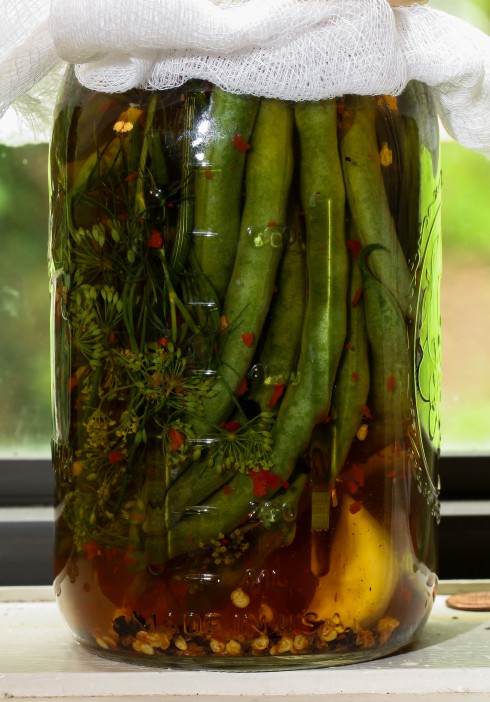
Dilly Beans
Our first hands-on activity was to create pickled dilly beans—basically salt pickled green beans with fresh dill, garlic, pepper flakes, and black peppercorns. For a one quart ferment we used 2 tablespoons of sea salt, 1 to 2 tablespoons of pepper flakes, a teaspoon of peppercorns, fresh dill, whole garlic cloves and as many beans as we could cram in without them sticking up above the water. We covered them with water and sealed it up. When I got home I swapped cheesecloth for the lid to allow the ferment to breath without dust getting into the jar. In one or two weeks I should have a finished product.
We also talked about using an air lock lid. It prevents air from getting into the brine while still allowing gases to escape. This approach prevents a problem where mold can form on any bits of vegetable that stick out of the brine solution. Here’s a link at Amazon. I’ve got some on the way. The mad scientist in me just can’t say no to lab equipment.
Kombucha is freaky
Kombucha Scoby from KaryandMark on Vimeo.
The second activity was based on Kombucha, a fizzy sweet tea fermented with a bacteria and yeast starter. And it’s the starter, known as a SCOBY (symbiotic culture of bacteria and yeast) that makes Kombucha kind of freaky. In the short video above Jessica is pulling apart the scobys (aka mothers) she cultured for the class so we can each start our own Kombucha ferment. So after I got home I brewed a half gallon of black tea, added a half cup of sugar, cooled it to room temperature, and poured it over the scoby. It lives!
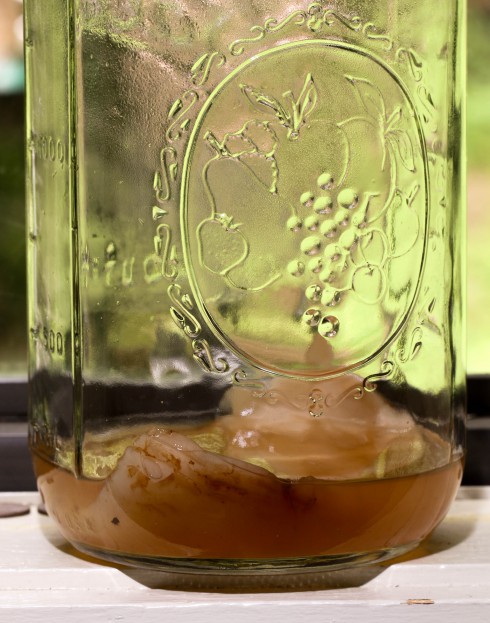
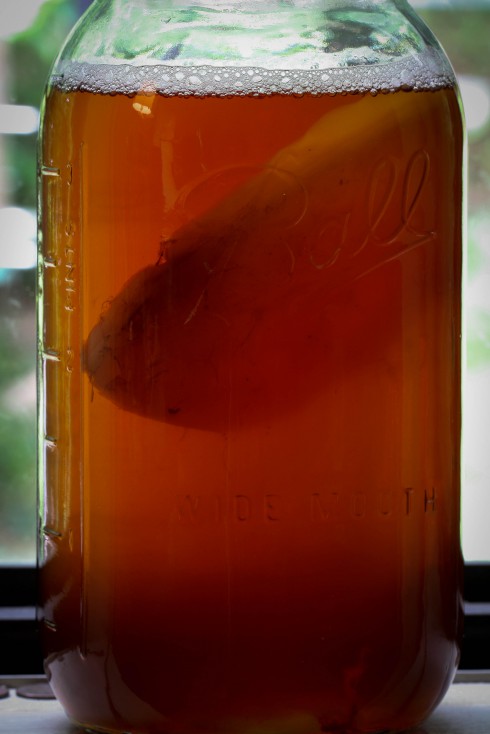
Fermented Salsa?
We also got to sample a salt fermented salsa. It’s a basic pico de gallo style salsa that pickles for a just few days. The result is a bit saltier and tangier than the usual pico and will keep for a much longer period due to the fermentation.
So my fermentation journey begins. I’ll let you know how these first experiments turn out.
Oh, and before I forget, I have to mention that I ran into our Beacon neighbors, Matt and Emily, at the class. We met them because Matt, who follows our blog, recognized me on the street from our pictures and introduced himself as I walked by his house with the dogs. And all this time I thought the people on the internet weren’t real…
Resources
- Cultures for Health is a great website for fermentation supplies and information.
- Michael Pollan’s NYT article, “Some of my best friends are Germs”
Update
If you’d like to see how the ‘dilly beans’ turned out, please read Mark’s update here.
Read On, Reader...
-

Jane Anderson | January 17, 2022 | Comment Ellenville’s Getting Ready For Its Closeup
-
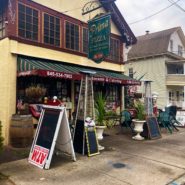
Brian PJ Cronin | December 20, 2021 | Comment Cornwall: Scene Change
-
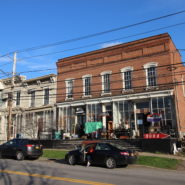
-
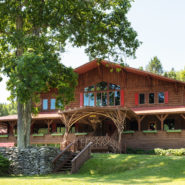
Marie Doyon | November 6, 2020 | Comment Urban Cowboy Lassos Hearts with its New Big Indian Lodge
